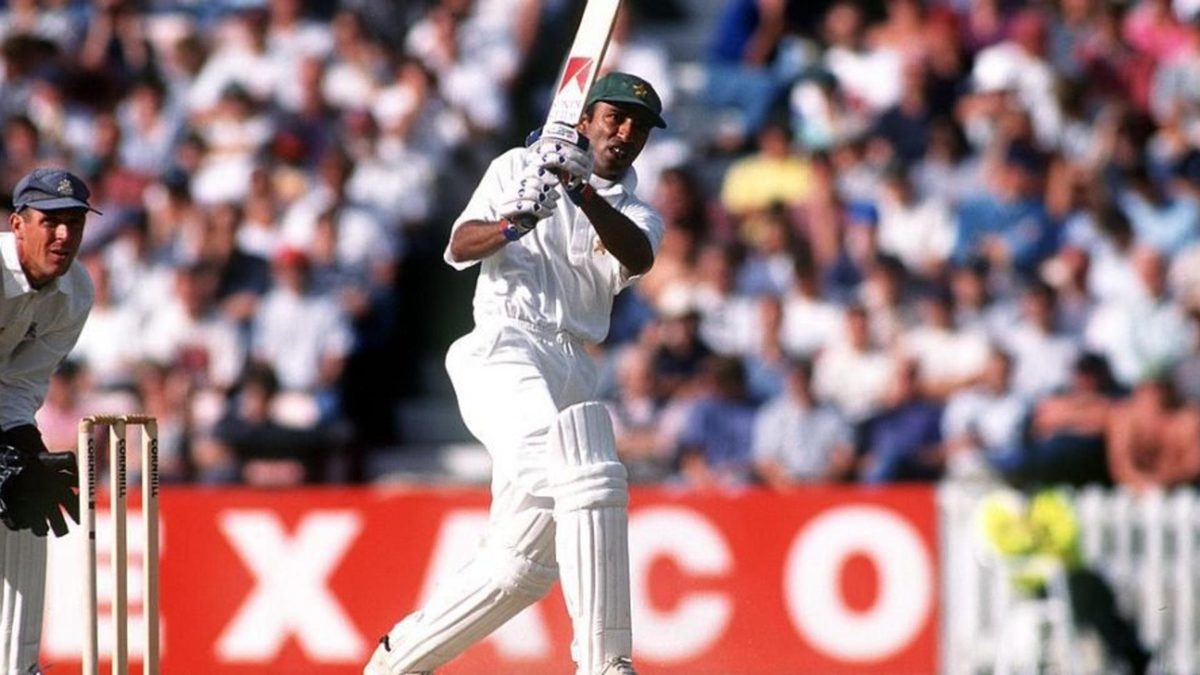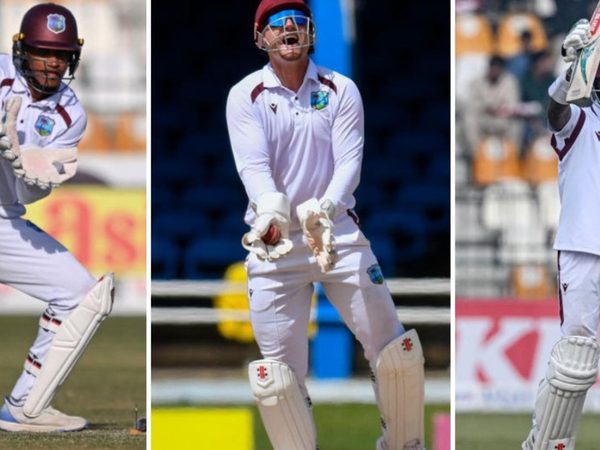
Saeed Anwar made the purists purr with his hundred for Pakistan against England at The Oval in 1996. He was named a Wisden Cricketer of the Year the following spring.
Saeed Anwar played 55 Tests for Pakistan, scoring 4,052 runs at 45.52. He also played in 247 ODIs, scoring 8,824 runs at 39.21.
If the most handsome batting of the English summer came from Sachin Tendulkar, the most beautiful innings was surely Saeed Anwar’s century at The Oval. After he had scored 74 and 88 in the opening Test at Lord’s, England conceived the policy of bowling wide of the left-hander’s off stump, to tempt him into impetuosities in the gully area, and it worked on the uneven pitch at Headingley.
At The Oval, Anwar moved his front foot and head well across, then his wrists hovered, hawk-like, over the advancing ball, extending further and further as if they were elastic if the ball was slanted ever more away from him, before the bat flowed into a square-drive to the boundary.
England’s strategy sped him to his highest Test score of 176. The same line in the one-day international series, to a 6-3 field, did not keep him quiet either: in his three innings he scored 151 runs off 159 balls, his timing rising above a pace-less Old Trafford pitch when his equally belligerent partner Aamir Sohail could not get the ball off the patchy square.
More conventional bowling methods at the start of the tour were to little avail: he made 219 not out against Glamorgan on his debut here and two more hundreds in his next three first-class games. Although his experience of cricket in England had been limited to a couple of league games in Bristol in 1992, his predisposition to front-foot play enabled him to finish with 1,224 runs at 68.00 to top the Pakistanis’ first-class tour averages. His brilliance, and the capable young understudy Shadab Kabir, minimised the effects of the wrist injury to Sohail; and on a personal level, he demonstrated, once and for all, that he was not merely a one-day batsman.
Saeed Anwar was born in Karachi on September 6, 1968, and came close to never playing cricket at all. In 1973 his father, an engineer, moved to a job in Teheran, and his family stayed there with him until the beginnings of pre-revolutionary turmoil drove them away in 1977. In that time the boy’s only sport was football. When his father took his next job in Saudi Arabia, Anwar returned to Karachi to live with his grandparents.
His father was a talented club cricketer when business allowed. Aged 45, he played in a club match with his son and straight-drove a ball which, his son says, almost cleared two grounds. Anwar thinks he may have inherited some of his wrist-power from his father. He developed it by playing squash (daily) and table tennis; he became a slow left-arm bowler too; and, above all, he practised batting in the garage of his Karachi home. The bowler was not his much younger brother, Javed Anwar, who has played for Lahore Under-19, but often Rashid Latif, Pakistan’s future wicketkeeper, who lived nearby. His reflexes were heightened by batting against a tennis ball covered in tape and bowled from 14 or 15 yards.
https://www.youtube.com/watch?v=H1UytebgYms
Anwar attended Malir Cantonment College and progressed into the Malir Gymkhana team during his first year at N.E.D. University in Karachi. Starting his club career as a spinner and No.9 batsman, he soon moved up to the middle order where his capacity for strokeplay found expression on pitches of matting laid over cement that were quick but straight. He graduated in computer systems engineering and would probably have joined numerous university classmates in going to the United States to do a Masters in networking or systems analysis, but for his cricket.
His rapid run-scoring led to selection against the touring Australians in 1988-89 at Peshawar for the NWFP Governor’s XI: batting at No.5 Anwar does not seem to have been overawed as he scored his 127 from 156 balls. He was chosen for the short tour of Australia and New Zealand a few months later and he did make his debut in one-day internationals, but was sent home after one first-class game in Australia as Pakistan needed an opener. He was back on the Test tour of Australia a year later. There was little opportunity in the middle order, but when he was promoted to open halfway through the World Series, he scored 126 off only 99 balls against Sri Lanka. His one-day career was launched.
His beginning in Test matches was stickier: against West Indies at Faisalabad in 1990/91, he bagged a pair as an opener, but it was Curtly Ambrose and Ian Bishop who dismissed him and he can laugh about it in retrospect. The one-day runs continued in profusion, but further Test opportunities did not arise, and the one-day batsman label applied by Pakistan’s press and public stuck ever more tightly.
It was with some relief that in February 1994, in his third Test, he scored 169 against New Zealand at Wellington. “It was the most thrilling time of my life. I was really happy to have proved all those people wrong.”
His tour captain last summer, Wasim Akram, thought that marriage also had a hand in Anwar’s maturing as a Test cricketer. He was married in March 1996 to a cousin and doctor, Lubna, who had nursed him through the attack of what might have been malaria or typhoid that led him to miss most of 1995. He was cured only just in time for the last World Cup.
It all came together in England last summer, and the only disappointment – other than for England’s bowlers – was that a three-Test series was too short for a full appreciation of Test cricket’s new delight.








